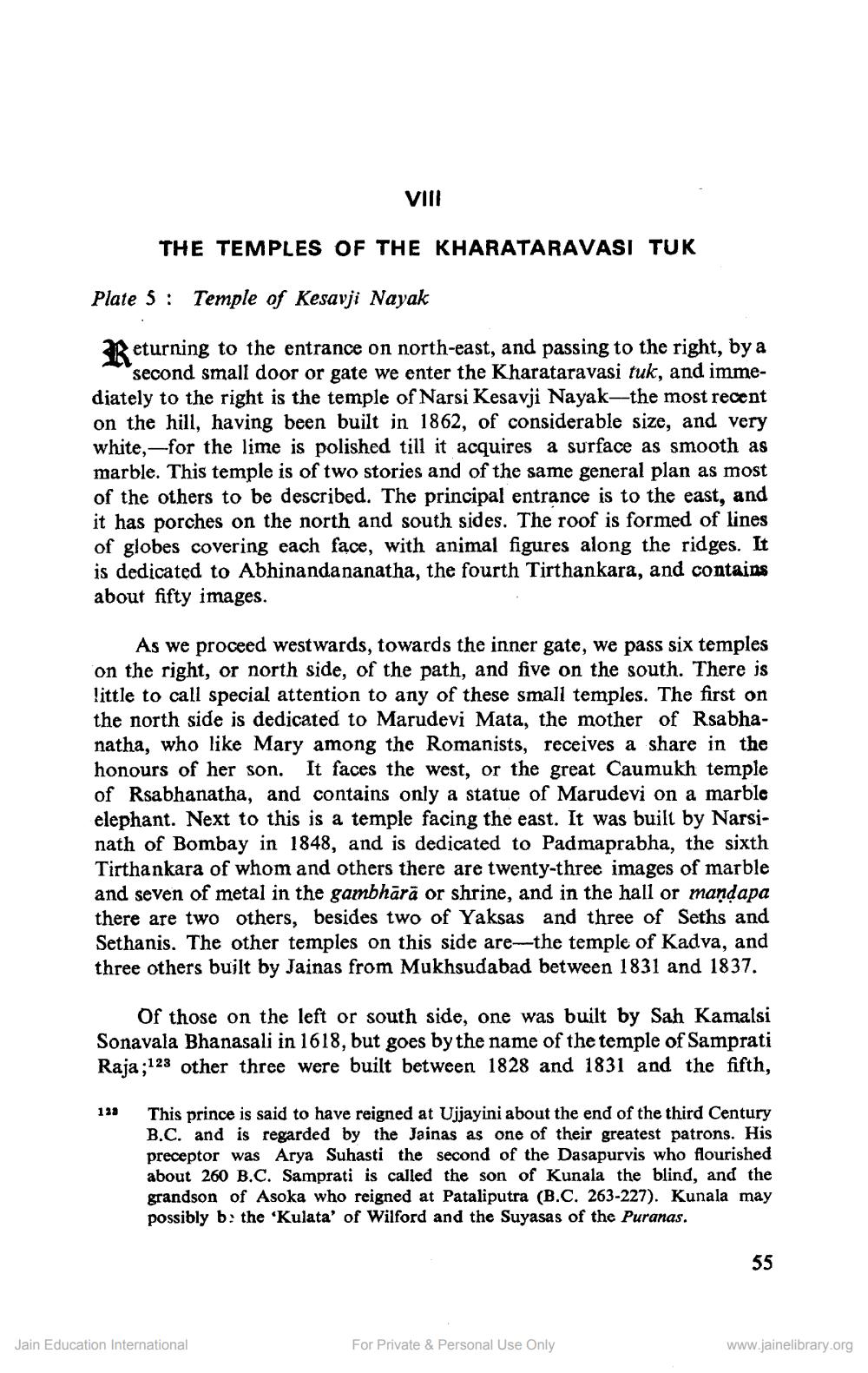________________
VIII
THE TEMPLES OF THE KHARATARAVASI TUK
Plate 5 Temple of Kesavji Nayak
Returning to the entrance on north-east, and passing to the right, by a
second small door or gate we enter the Kharataravasi tuk, and immediately to the right is the temple of Narsi Kesavji Nayak-the most recent on the hill, having been built in 1862, of considerable size, and very white,for the lime is polished till it acquires a surface as smooth as marble. This temple is of two stories and of the same general plan as most of the others to be described. The principal entrance is to the east, and it has porches on the north and south sides. The roof is formed of lines of globes covering each face, with animal figures along the ridges. It is dedicated to Abhinandananatha, the fourth Tirthankara, and contains about fifty images.
As we proceed westwards, towards the inner gate, we pass six temples on the right, or north side, of the path, and five on the south. There is little to call special attention to any of these small temples. The first on the north side is dedicated to Marudevi Mata, the mother of Rsabhanatha, who like Mary among the Romanists, receives a share in the honours of her son. It faces the west, or the great Caumukh temple of Rsabhanatha, and contains only a statue of Marudevi on a marble elephant. Next to this is a temple facing the east. It was built by Narsinath of Bombay in 1848, and is dedicated to Padmaprabha, the sixth Tirthankara of whom and others there are twenty-three images of marble and seven of metal in the gambhārā or shrine, and in the hall or mandapa there are two others, besides two of Yaksas and three of Seths and Sethanis. The other temples on this side are-the temple of Kadva, and three others built by Jainas from Mukhsudabad between 1831 and 1837.
Of those on the left or south side, one was built by Sah Kamalsi Sonavala Bhanasali in 1618, but goes by the name of the temple of Samprati Raja;1 123 other three were built between 1828 and 1831 and the fifth,
128 This prince is said to have reigned at Ujjayini about the end of the third Century B.C. and is regarded by the Jainas as one of their greatest patrons. His preceptor was Arya Suhasti the second of the Dasapurvis who flourished about 260 B.C. Samprati is called the son of Kunala the blind, and the grandson of Asoka who reigned at Pataliputra (B.C. 263-227). Kunala may possibly be the 'Kulata' of Wilford and the Suyasas of the Puranas.
Jain Education International
For Private & Personal Use Only
55
www.jainelibrary.org




